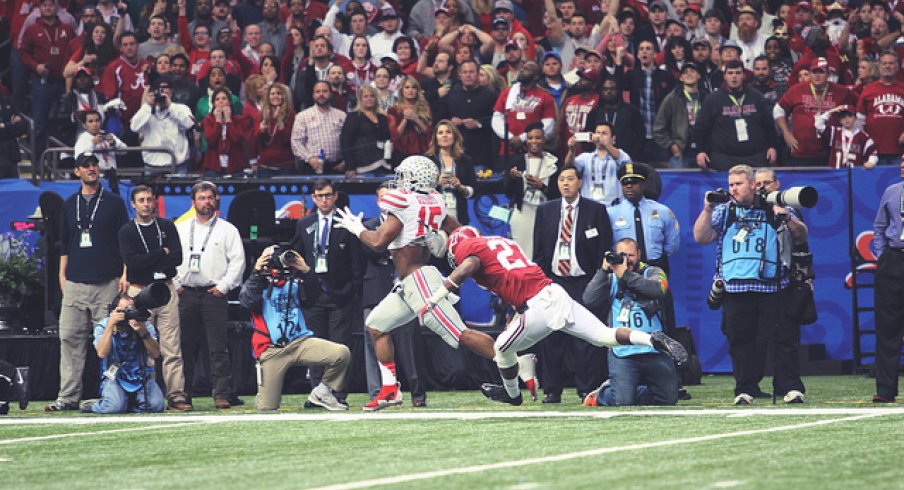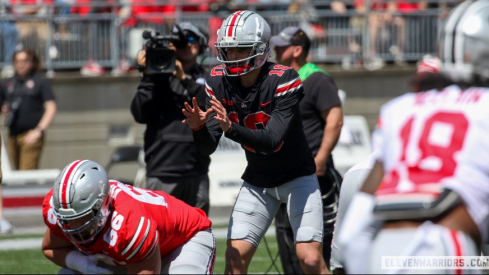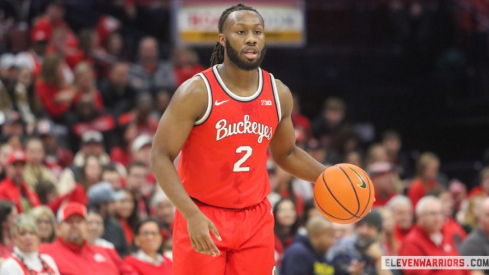We like to think that we have a good handle on football, if only to convince ourselves that we can smugly predict future sporting events with any kind of accuracy. There's a whole cottage industry of preview magazines, award watch lists, and preseason polls devoted to the idea that people and teams and sports in general are somehow eminently knowable, that we can use past performance to peer into the future because we're smart, dammit! We're just so smart.
Well, we're not. We are dumb.
Humans are notoriously bad at understanding patterns and numbers and worse, drawing really ridiculous conclusions from said patterns and numbers. Being the smart-yet-dumb people that we are, we know instinctively that the "eye test" is a faulty way to evaluate players and teams, so we make the same mistake twice and use what we think is reliable data to back up our confirmation bias. In other words, sabermetrics and advanced stats are great, but only if the person wielding them knows what the hell they're doing.
For this part of our 2015 season preview, we're going to look at times where things got weird statistically for the 2014 Ohio State Buckeyes. Some of these stats are interesting, and maybe even a little instructive (especially on offense). Some of these stats are ridiculous and nonsensical, and about as predictive as reading the shape of dog barf. After going through these, I'm personally having a hard time telling which is which.
TEAM STATS- OFFENSE
RUSHING
This is kind of what I'm talking about. By all accounts, Ohio State was one of the best rushing teams in the country last season. They ranked 9th in the country in yards per game (264-plus), and did that against some of the best rushing defenses in the country. By all accounts, they were an unstoppable rushing force of nature... except in the second and third quarters.
See, for some reason the Buckeyes, who averaged 7.64 yards per carry in the 1st quarter of games, dropped all the way to a very pedestrian 47th in the 2nd, only good for 4.6 yards per carry. In the 3rd they got slightly better, moving up to 5.03 yards per carry, but it's clear that despite overall success on the ground, looking at their base ranking in yards per game doesn't tell the entire story.
PASSING
How about this one: in 2014, Ohio State passed on 3rd and long situations (here defined as 3rd and 7 or more) 51 times, and completed about 68% of those passes. Pretty good, right? Except no, only 23 of those went for 1st downs. A 45% third down and long conversion rate on passing plays isn't bad by any stretch of the imagination, but maybe Ohio State also wan't the world beater that we'd like to make them out to be. Statistically, I mean, because obviously they were world beaters, having defeated the world in the national championship game.
OVERALL OFFENSE
These are fun, because despite all the flim-flammery of the other offensive stats, some of the more obscure total offensive stats help illustrate why Ohio State was such a force with the ball.
October, for instance, is when the team really came into its own. They took care of the ball (+6 in turnover margin), scored on 83% of their trips inside the red zone, and were just generally badass in a way that would continue for the rest of the year. By the end of the season, the Buckeyes had racked up 28 plays of 40 yards or more, a mark which no team in the country was able to best and a true measure of greatness.
Actually, I'm just kidding, they somehow fumbled the ball 24 times and lost 14 of those, so they were terrible.
TEAM STATS- DEFENSE
RUSHING
Defense is where I'm supposed to feel really good about Ohio State. My gut tells me that they played several high powered offenses in the last month or so of the season and skunked all of them, particularly the Oregon Ducks. Statistics, on the other hand, tell me that the OSU rushing defense was a dangerously mentally ill person on heavy psychotropic drugs.
Example 1 being that the Buckeyes had a flat out bad rushing defense in the 1st quarter of most of their games, giving up an average of 44 yards to the tune of 4.72 yards per carry. That's in one damn quarter! The first one! Which I feel is fairly important!
Then, by the grace of Woody Hayes, they buckled down in the 2nd quarter, only allowed an average of 29 yards each game at a clip of 2.89 yards per carry, and that was that. Right?
No! In the 3rd quarter they went back and allowed another 42.5 yards on average and 4.8 yards per carry, and then followed that up with 26.4 yards allowed on average at 3.45 yards per carry in the 4th. In the meantime this is the team that allowed 69 rushes of 10 or more yards, but also shut down Melvin Gordon in the B1G Championship, so figure that out.
PASSING
The weirdest thing here is that Ohio State ranked second in the country by allowing only 24 completed passes of 20 yards or more, but it probably would've been helpful had 8 of those passes not gone for 50 yards or more. Maybe this is just a symptom of a team that gambles big (25 interceptions, 4th in the country), but as a precaution I also feel that Gunner Kiel should not be allowed within 150 yards of Ohio Stadium.
OVERALL
Going back to the theme of October defining the Buckeyes, in that month the defense racked up 12 sacks in just three games, which would lead you to think that this would be a defense that could prevent opposing offenses from scoring in the red zone 84% of the time (and a touchdown 69% of the time), but you would be very wrong on that account.
INDIVIDUAL STATS
OFFENSE
If this article seems negative so far, it's mostly because of the shock of a national championship winning team having so many statistical factors against them in a 14 win season.
But the real reason why the Buckeyes won the first national championship of the playoff era was some incredible performances from individual players. Because of the Cardale show that was the postseason, for instance, it's very easy to forget that J.T. Barrett completely blew up the Ohio State record books during the regular season. In 12 games he passed for three or more touchdowns seven got-dang times, and aside from the Virginia Tech game, never completed less than 60% of his passes.
Ezekiel Elliott, of course, also deserves his due praise in the form of some weird stats; blah in the 2nd and 3rd quarters ad averaging only 5 yards per carry, EzE was deadly at the beginning and end of games, rushing for 1196 yards in the 1st and 4th quarters of games to the tune of 8.6 yards per carry. Not too shabby when it counted.
DEFENSE
Defense was much the same way, in that statistics often overshadowed or skewed the true worth of a player to the team.
Darron Lee, for example, never recorded 10 tackles in a game, but his three tackles for loss against Alabama (including two sacks), his forced fumble against Wisconsin, and his general awesomeness against Oregon was utterly invaluable.
And even the most ardent Shruggalo would have to admit that while Joey Bosa didn't record a single sack against either Wisconsin, Alabama, or Oregon, he still played his ass off and was one of the more dominant defensive players in the postseason for the team.
SPECIAL TEAMS AND OTHER RANDOMNESS
Want some more stat weirdness? Try these on for size:
- The Buckeyes averaged roughly 10 yards less per punt return on the road than at home for some reason
- This was not the case for kickoffs, which were essentially even both home and away
- Opponents averaged an infuriating 42.5 yards per punt against Ohio State for the year, which was good for 110th in the country
- Upping the level of difficulty for Ohio State in October was that their three opponents got penalized exactly six freaking times for a grand total of 65 yards
All of this could be also seen as a plea for a better implementation and understanding of advanced statistics in college football. We need to better utilize and understand concepts like F+ and S&P+ rankings, if only because, as we've seen today, raw yardage numbers paint an incredibly weird portrait of what a team looks like.
It's entirely possible that the 2015 version of the Ohio State football team will produce similarly misleading numbers as the 2014 version did, and we can only hope that the overall outcome will be much the same.



